Alpine birds are a group of birds found in the mountainous regions of Europe and North America. Many of these species are adapted to cold climates and are known for their unique plumage and vibrant colors.
Alpine birds have adapted to the harsh alpine environment, they are able to forage for food in the snow and survive in the cold temperatures. Alpine birds are also known to be great climbers, often scaling vertical cliffs and peaks in search of food and shelter.
Some species of Alpine birds are even known to migrate great distances in search of food. Alpine birds are an important part of the Alpine ecosystem and offer a great source of entertainment to birdwatchers.
1. Alpine Chough
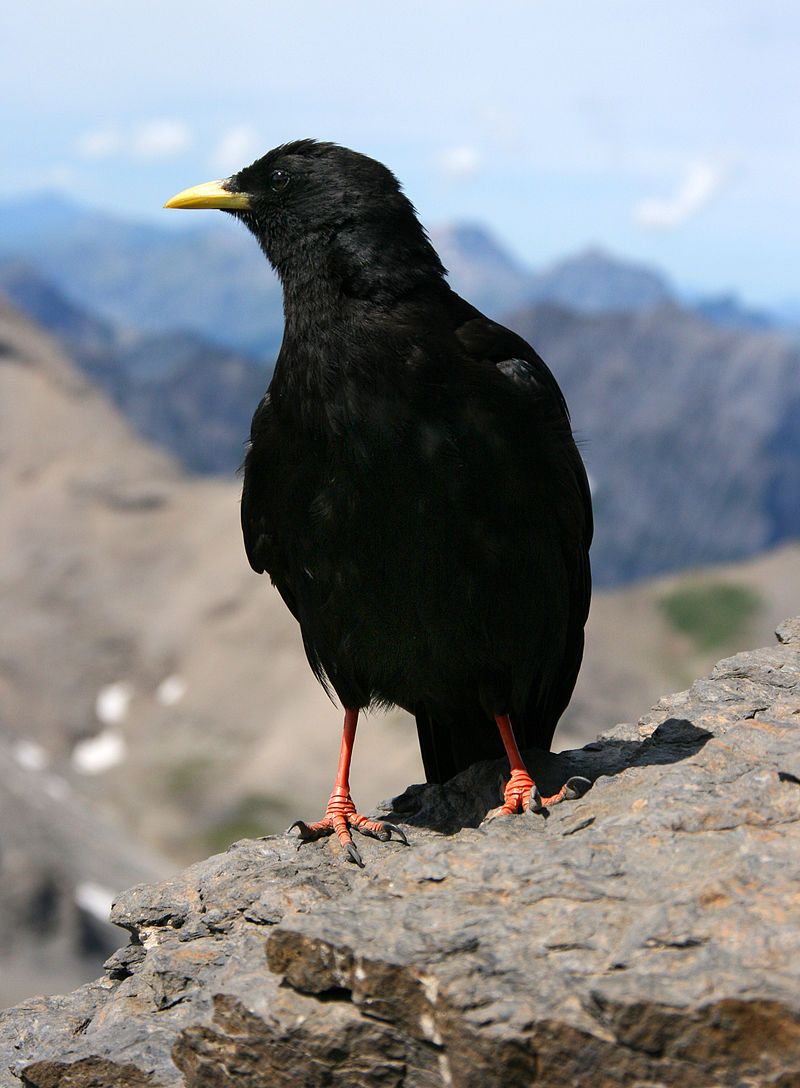
The Alpine chough, also known as the yellow-billed chough, is a member of the crow family and is one of two species in the genus Pyrrhocorax. This species of bird is found throughout southern Europe, North Africa, Central Asia, and Nepal, where it breeds in mountainous regions.
The Alpine chough is able to survive in particularly high altitudes, higher than any other bird species. This species is known for its distinctive yellow beak and its black feathers.
The two subspecies of this species have slightly different features, such as the size of their beaks, which differ according to the region in which they are found.
The yellow-billed chough is an incredibly resilient bird and is able to survive in a wide range of climates and terrains, from the mountains of Spain to the heights of the Himalayas.
| Kingdom | Animalia |
| Phylum | Chordata |
| Class | Aves |
| Order | Passeriformes |
| Family | Corvidae |
| Genus | Pyrrhocorax |
| Species | P. graculus |
2. Alpine Accentor
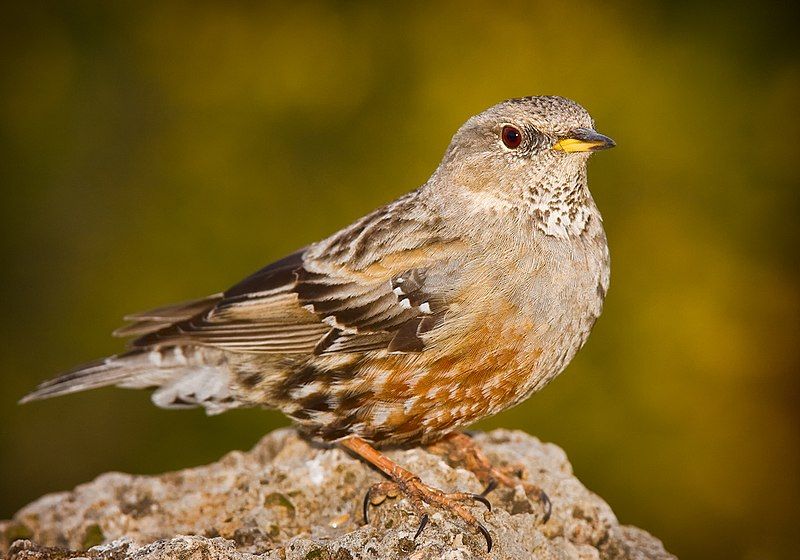
The alpine accentor is a small, sparrow-sized bird that belongs to the family Prunellidae. Native to Eurasia and North Africa, this species is found in a variety of habitats, from rocky mountain slopes to alpine meadows.
They are recognizable by their brownish-grey feathers with white wing bars, and their yellowish-brown legs and feet. The alpine accentor is an omnivore, feeding mainly on insects, spiders, larvae, and seeds.
They breed in the summer, constructing a cup-shaped nest from twigs and grasses, which is typically placed in a crevice in the rocks. The female lays two to five eggs, which are incubated by both parents for around two weeks.
The chicks fledge after about two or three weeks and soon become independent of their parents. The alpine accentor is a highly vocal bird, with a range of distinctive calls.
They are known for their loud song, which is composed of short, melodious phrases and a variety of trills and whistles. This species also has a unique courtship display, where the male will fly high in the air, singing and flapping its wings in a complex manner.
The alpine accentor is a widespread but declining species, with a population estimated to be around 8 million individuals. The main threats to this species are habitat loss and fragmentation, as well as climate change.
Conservation efforts are needed to protect this species and its habitats, such as the establishment of protected areas and the improvement of agricultural practices.
| Kingdom | Animalia |
| Phylum | Chordata |
| Class | Aves |
| Order | Passeriformes |
| Family | Prunellidae |
| Genus | Prunella |
| Species | P. collaris |
3. Alpine Swift
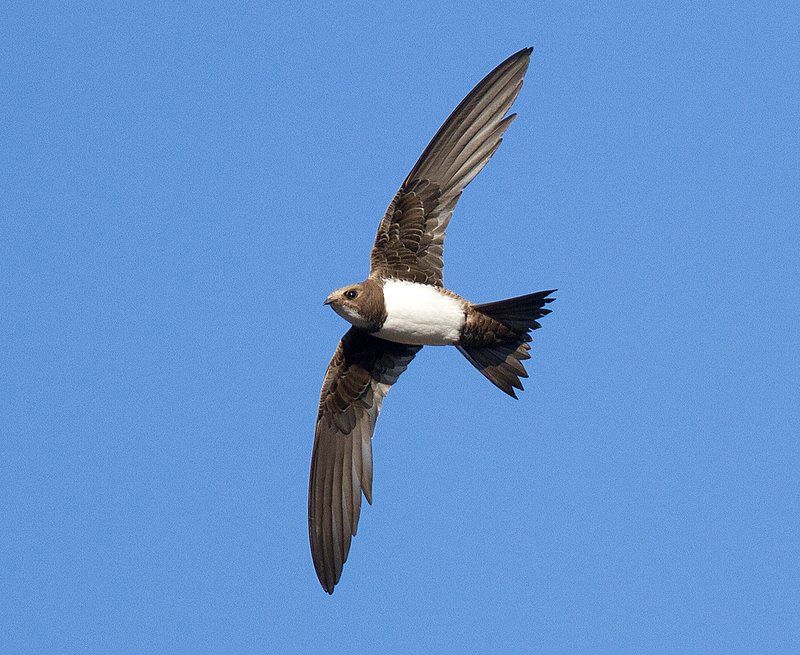
The alpine swift is a species of bird belonging to the swift family. Its range extends across the continent of Africa, as well as parts of southern Europe and Asia. These birds are mainly mountain dwellers and breed in the mountains of southern Europe to the Himalayas.
Typical of swifts, they are migratory birds and the southern European population spends its winters in southern Africa. Alpine swifts are known for their agility and adapted wings, which allow them to maneuver effortlessly and quickly in the air.
They feed on flying insects and spend most of their time in the air, only returning to their nests to rest and breed. They build their nests in crevices of cliffs and other rocky areas and use mud and saliva to construct them.
The alpine swift is a fascinating species that serves as an important part of the ecosystem.
| Kingdom | Animalia |
| Phylum | Chordata |
| Class | Aves |
| Clade | Strisores |
| Order | Apodiformes |
| Family | Apodidae |
| Genus | Tachymarptis |
| Species | T. melba |
4. White-Winged snow finch
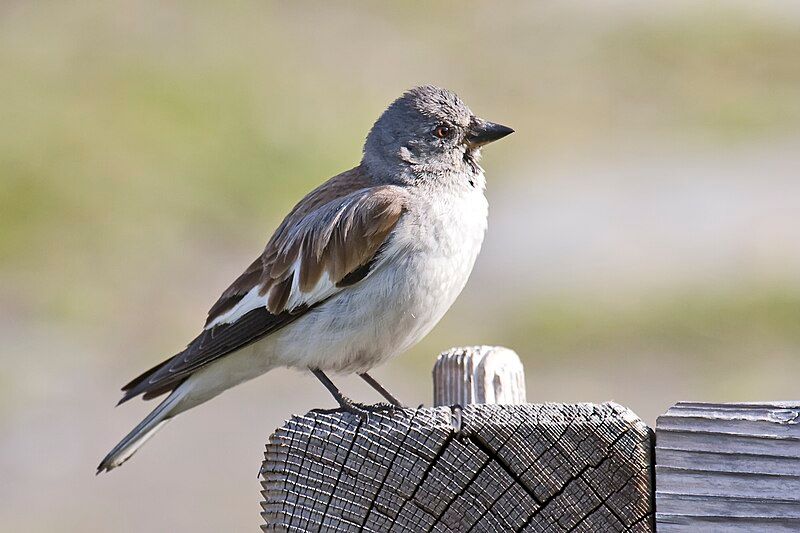
The white-winged snow finch is a small passerine bird that is often mistaken for a finch due to its name. In fact, it is not a true finch, but rather a species of sparrow. It has a white wing patch and a grey back, with a blackish crown and a light-colored underbelly.
The snow finch prefers to inhabit open, grassy areas, such as meadows or shrublands, and can often be seen perched on low vegetation. They feed on a variety of seeds and insects, with their diet consisting mainly of small grains and grass seeds.
They are also known to eat the larvae of grasshoppers and other insects. The snow finch is a migratory species, traveling to warmer climates during the winter months, and returning to their breeding grounds in the spring.
They are found in various parts of Eurasia and are a common sight in many countries across the continent.
| Kingdom | Animalia |
| Phylum | Chordata |
| Class | Aves |
| Order | Passeriformes |
| Family | Passeridae |
| Genus | Montifringilla |
| Species | M. nivalis |
5. White-Tailed Ptarmigan
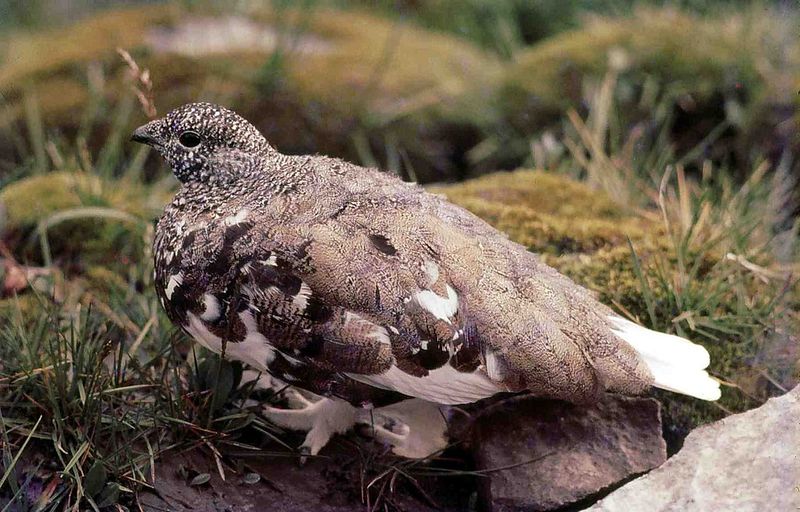
The white-tailed ptarmigan is a bird from the grouse family and is the smallest of its kind. Native to Alaska, Canada, and some parts of the western United States, this bird is a permanent resident of high altitudes, usually above the tree line.
This means that it can be found in mountainous areas, where the elevation is far higher than the surrounding land. The white-tailed ptarmigan has adapted to these cold and harsh environments and is able to survive in temperatures well below freezing.
It is also known as the snow quail, due to its white feathers and its ability to remain camouflaged in snow-covered areas.
This bird has many unique features that have allowed it to survive in its cold and unforgiving habitat, such as its ability to change its feathers from white to brown in order to better blend into its environment.
It also has impressive resistance to the cold and is able to survive extreme temperatures. The white-tailed ptarmigan is a remarkable creature that has adapted to its environment and is a permanent resident of high-altitude areas in the north.
| Kingdom | Animalia |
| Phylum | Chordata |
| Class | Aves |
| Order | Galliformes |
| Family | Phasianidae |
| Genus | Lagopus |
| Species | L. leucura |
6. Common Raven
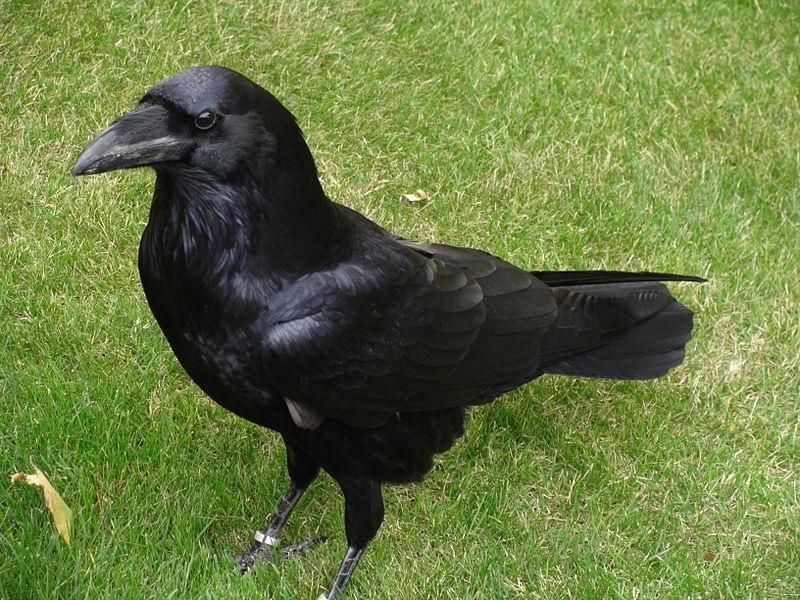
The common raven is a large, all-black, passerine bird belonging to the family Corvidae. It is native to the Northern Hemisphere and is one of the most widely distributed corvid species in the world.
It is found across the Northern Hemisphere, from Europe and North Africa to the Middle East, Asia, North America, and even as far south as South Africa. The common raven is a large bird, with a body length of up to 24 inches and a wingspan of up to 4 feet.
It has black feathers on its head, back, and wings, and a white-tipped beak. Ravens are intelligent and social birds, and they form long-lasting bonds with their mates.
They are opportunistic feeders and can be found scavenging for food in a variety of habitats, from dense forests and grasslands to urban areas.
In addition to its black feathers, the common raven also has a distinctive call that is often described as a “kronking” or “cronking” sound.
| Kingdom | Animalia |
| Phylum | Chordata |
| Class | Aves |
| Order | Passeriformes |
| Family | Corvidae |
| Genus | Corvus |
| Species | C. corax |
7. Rock Ptarmigan
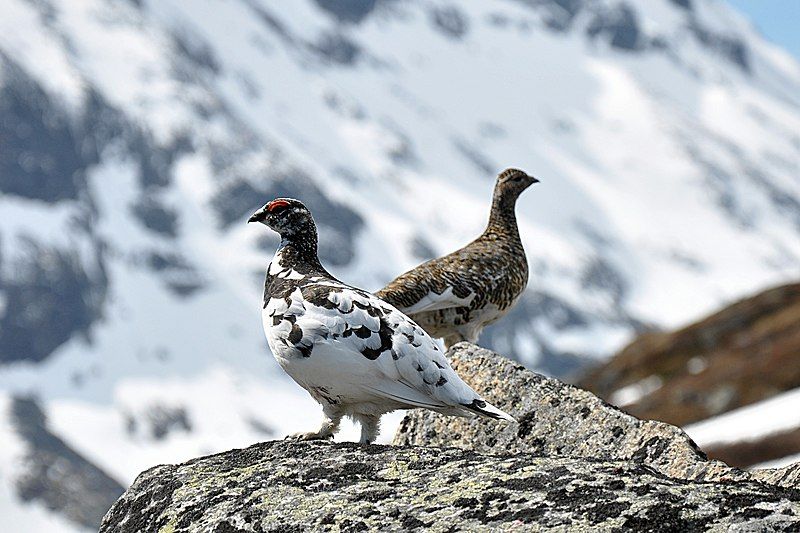
The rock ptarmigan is a type of game bird that is part of the grouse family. It is commonly referred to as the ptarmigan in the United Kingdom. This bird is the official bird for Nunavut, a Canadian territory, where it is referred to as the aqiggiq.
Additionally, the rock ptarmigan is the official game bird for the province of Newfoundland and Labrador. This bird is known for its ability to survive in colder climates and its distinctive white plumage that helps it blend in with the snow.
It is a medium-sized bird that is usually found in high-altitude areas. The rock ptarmigan is a popular bird for hunters and bird watchers alike, as it is a relatively easy bird to spot in its natural habitat.
| Kingdom | Animalia |
| Phylum | Chordata |
| Class | Aves |
| Order | Galliformes |
| Family | Phasianidae |
| Genus | Lagopus |
| Species | L. muta |
8. Mountain Chickadee
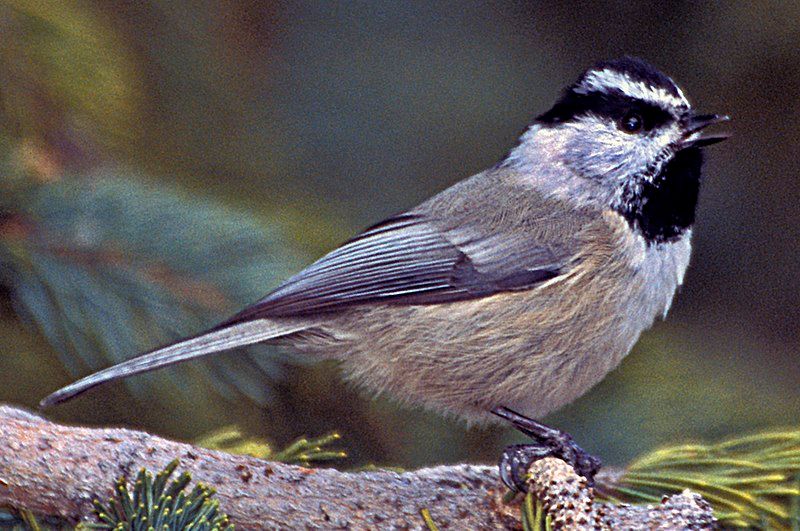
The mountain chickadee is a small, charming songbird native to mountainous regions. It belongs to the family of birds known as Paridae, which includes a variety of species commonly referred to as titmice or simply tits.
This family is found in the northern hemisphere, with the mountain chickadee specifically found in regions of the western United States and Canada. The mountain chickadee is a small, round-bodied bird, typically measuring between 4 and 5 inches in length.
It has a black head and throat, a white face, and a gray back. The wings and tail are also gray, while the chest is buffy. It has a short, stout bill and long legs, both of which aid in its ability to forage for food.
The mountain chickadee’s diet consists of a variety of items, such as insects, eggs, nuts, and seeds. It typically forages in trees, though it is also capable of foraging on the ground.
This bird’s most distinctive feature is its song, which consists of a series of “chick-a-dee-dee” notes. It typically sings during the day in order to attract a mate and to mark its territory.
The mountain chickadee is a highly adaptable bird, which has allowed it to become successful in a variety of habitats. It is a common sight in forests, woodlands, and parks, especially in higher elevations.
This species is not currently threatened, though its numbers are declining in some areas due to habitat loss.
| Kingdom | Animalia |
| Phylum | Chordata |
| Class | Aves |
| Order | Passeriformes |
| Family | Paridae |
| Genus | Poecile |
| Species | P. gambeli |
9. Golden Eagle
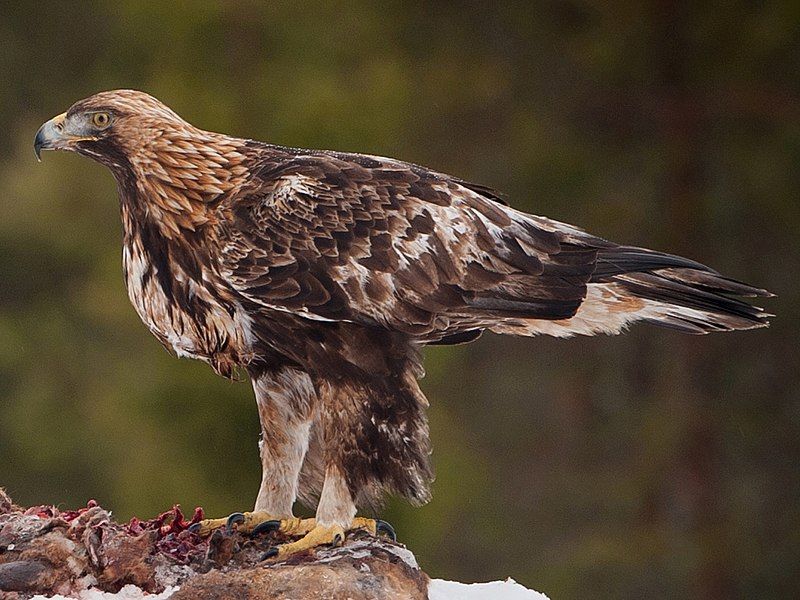
The golden eagle is a majestic bird of prey that inhabits the Northern Hemisphere. It is the most widely distributed species of eagle and is a member of the Accipitridae family, which includes other birds of prey such as hawks, vultures, and kites.
Golden eagles are some of the best-known birds of prey in the Northern Hemisphere, and their presence is a welcome sight for birdwatchers and nature enthusiasts. These large birds have dark brown feathers with golden-brown head, neck, and tail feathers.
In terms of size, they are typically about two and a half feet long, with a wingspan of six to seven feet. They have a sharp, hooked bill and powerful talons. Golden eagles usually hunt small mammals such as rabbits, hares, and foxes.
They also feed on other birds, such as grouse and ptarmigans, as well as carrion. They can even hunt larger animals such as deer or young sheep.
They usually nest in tall trees or on cliffs and use their powerful vision to spot their prey from a far distance. Golden eagles are a symbol of strength and power, and they are a protected species in many countries.
They are also an important part of the food chain, helping to keep populations of smaller mammals in balance. Unfortunately, golden eagles are threatened by human activity, such as hunting and habitat destruction.
It is important to protect these magnificent birds so that future generations can appreciate their beauty and power.
| Kingdom | Animalia |
| Phylum | Chordata |
| Class | Aves |
| Order | Accipitriformes |
| Family | Accipitridae |
| Genus | Aquila |
| Species | A. chrysaetos |
10. White Wagtail
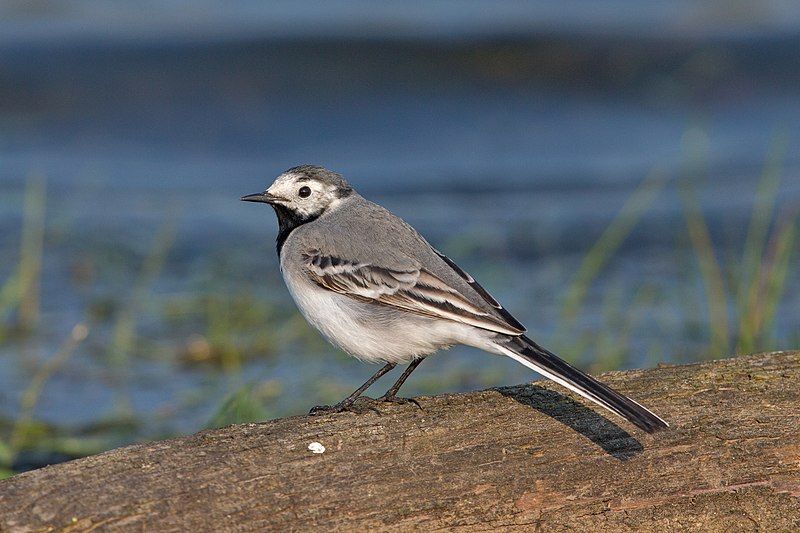
The white wagtail is a small bird that belongs to the Motacillidae family, which includes pipits and long claws. It is generally found in most parts of Europe and in the Asian Palearctic, as well as several parts of North Africa.
In addition, it also breeds in Alaska, though it is considered to be quite rare there. The white wagtail is a very popular species of bird, due to its beautiful coloring. Its name derives from the fact that it has a white underside with a black tail.
It also has a distinctive black head, as well as a white throat and breast. In terms of its habitat, the white wagtail usually prefers to inhabit open countryside, meadows, and grasslands, and it can also be found in parks and gardens.
It is known to feed on insects, spiders, and other small invertebrates. The white wagtail is an important species for conservation, as it plays an important role in the maintenance of grassland habitats.
| Kingdom | Animalia |
| Phylum | Chordata |
| Class | Aves |
| Order | Passeriformes |
| Family | Motacillidae |
| Genus | Motacilla |
| Species | M. alba |
11. Dark-Eyed Junco
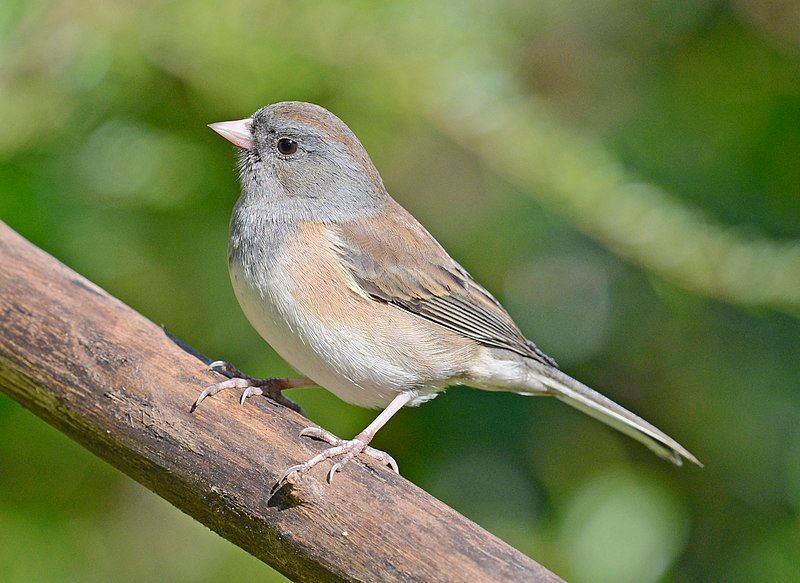
The dark-eyed junco is a species of junco, a group of small, grayish New World sparrows found across much of temperate North America. In summer, they can be found far into the Arctic. This species is quite variable and has similarities to the fox sparrow.
Scientists still have yet to fully understand the systematics of the dark-eyed junco, making it a fascinating species for further study. The dark-eyed junco is a small bird, with a grayish color, making it difficult to distinguish from other species.
The species is found in temperate North America, meaning the conditions are not extreme.
During summer months, the range of the dark-eyed junco extends far into the Arctic, likely in search of food or other resources. The species is very variable, meaning it can be distinguished from other species in the same family.
For example, the dark-eyed junco has similarities to the fox sparrow but can be distinguished from it. Despite its similarities to other species, scientists still have yet to fully understand the systematics of the dark-eyed junco.
This means further study is needed in order to better understand the species. Overall, the dark-eyed junco is a fascinating species of small, grayish New World sparrows found across much of temperate North America.
In summer, they can be found far into the Arctic and have similarities to the fox sparrow. Scientists still have yet to fully understand the systematics of the dark-eyed junco, making it a species worthy of further study.
| Kingdom | Animalia |
| Phylum | Chordata |
| Class | Aves |
| Order | Passeriformes |
| Family | Passerellidae |
| Genus | Junco |
| Species | J. hyemalis |
12. Water Pipit
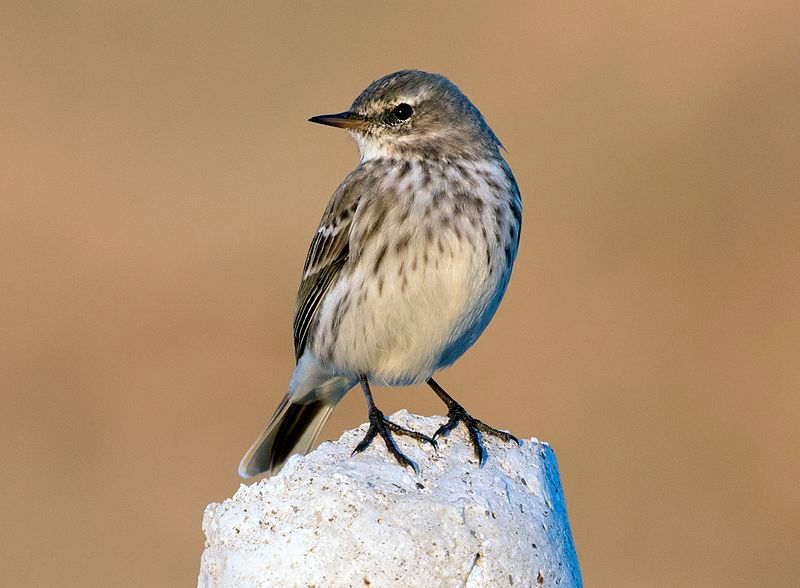
The water pipit is a small passerine bird that is found in the mountains of Southern Europe and the Palearctic region, stretching east to China. It is a migratory bird, which means that it moves to a new location during certain times of the year.
In winter, many water pipits fly to lower altitudes or wet open lowlands, which provide them with better food sources and a warmer environment. This migration helps the birds survive the cold season, as the lower altitudes and wet lowlands have a more temperate climate.
The water pipit is usually found in grassy areas, such as meadows, grasslands, and wetlands, where it feeds on small invertebrates, seeds, and grains. They also feed on insects and other small invertebrates near streams, ponds, and rivers.
The water pipit nests in tall grass and reeds, and the female builds the nest with materials such as grass, moss, and leaves. The water pipit is a relatively common bird, although its populations have decreased in some areas due to human-induced habitat destruction.
| Kingdom | Animalia |
| Phylum | Chordata |
| Class | Aves |
| Order | Passeriformes |
| Family | Motacillidae |
| Genus | Anthus |
| Species | A. spinoletta |
13. Hermit Thrush
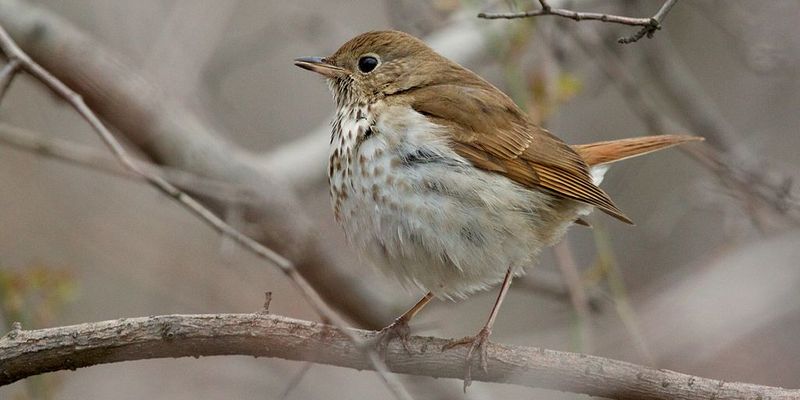
The hermit thrush is a species of bird native to North America. It is a medium-sized thrush that is not closely related to the other species of thrush found in North America, such as the Catharus. Instead, it is more closely related to the Mexican russet nightingale thrush.
The species name for the hermit thrush is guttatus, which is Latin for “spotted.” This species of thrush is known for its spotted breast and wings, which is why it has been given the scientific name guttatus.
The hermit thrush is an important species as it is one of the few songbirds that can be found in North America, and it is a key part of the ecological balance of the region.
| Kingdom | Animalia |
| Phylum | Chordata |
| Class | Aves |
| Order | Passeriformes |
| Family | Turdidae |
| Genus | Catharus |
| Species | C. guttatus |
14. Crow Family
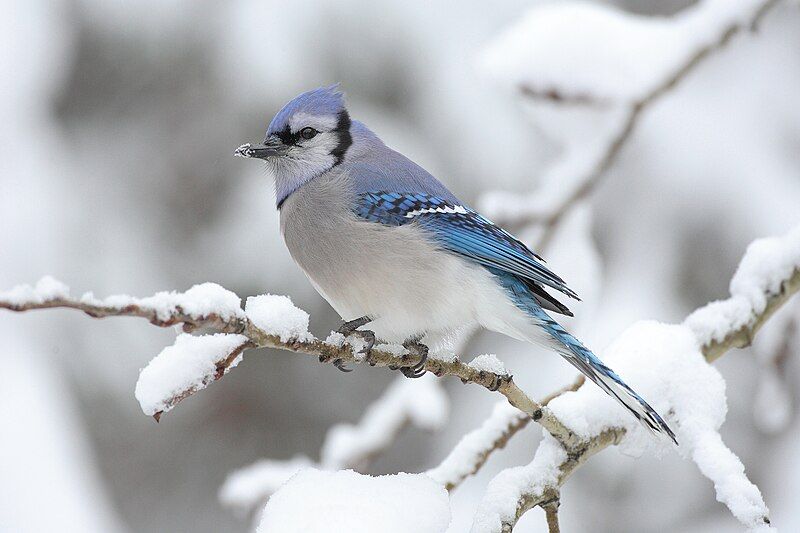
Corvidae is a family of birds that is found throughout the world. It consists of many different species, including crows, ravens, rooks, magpies, jackdaws, jays, treepies, choughs, and nutcrackers.
These birds are commonly referred to as “the crow family” or “corvids” in everyday English. Currently, 135 species of Corvidae are recognized in the scientific community. Members of the Corvidae family are known for their intelligence and resourcefulness.
They are among the most intelligent of all birds and their cognitive abilities are often compared to those of primates. Corvids are very social creatures, often living in large family groups, and they are able to use tools to solve problems.
They are also highly adaptable and have been observed using their environment to their advantage. The Corvidae family includes many species that are considered to be among the most beautiful and iconic of all birds.
Their feathers are often iridescent and brightly colored, and they have a wide variety of calls and songs.
Many of these birds are also considered to be highly charismatic, with their bold personalities and behaviors. In addition to their beauty and intelligence, members of the Corvidae family have also made a positive contribution to the environment.
They are important seed dispersers, helping to spread new plant growth throughout their habitats. They also consume a wide variety of prey, including insects, small mammals, and reptiles, which helps to keep populations of other species in check.
Corvids are also important to the cultural heritage of many people, with their presence being a symbol of good luck in many cultures.
| Kingdom | Animalia |
| Phylum | Chordata |
| Class | Aves |
| Order | Passeriformes |
| Family | Corvidae |
15. Anna’s Hummingbird
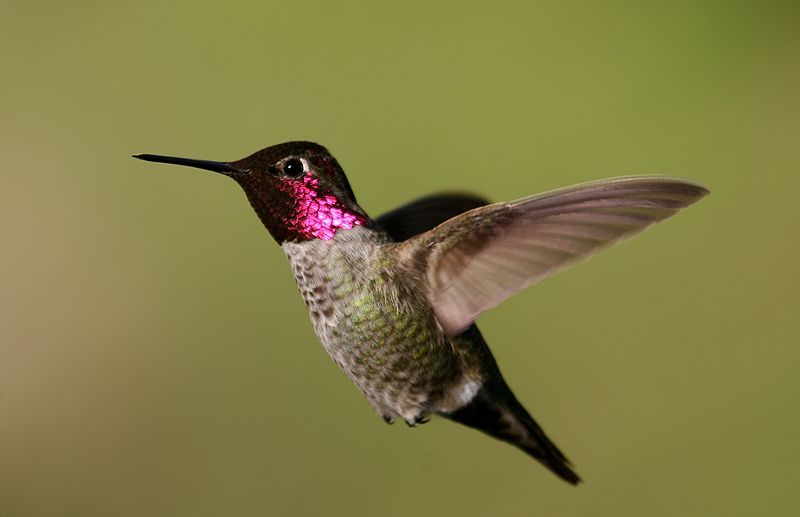
Anna’s hummingbird is a species belonging to the family Trochilidae, also known as the hummingbird family. It is a medium-sized bird with a wingspan of 3-5 inches and a length of 3-4 inches.
The hummingbird was named after Anna Masséna, Duchess of Rivoli, a French noblewoman and wife of Napoleon’s brother, Joachim Murat. Anna’s hummingbirds are native to western coastal regions of North America and were first discovered in the early 20th century.
At the time, they were found mainly in northern Baja California, and Southern California. Although they were once limited to those two areas, their range has since expanded to include other parts of the United States, Mexico, and Central America.
Anna’s hummingbirds are easily identifiable by their vibrant green feathers on the back and crown, and the bright pink feathers on the throat. They are also known for their signature humming sound, which they make by vibrating their wings at a high frequency.
This sound is used to attract mates and to warn other birds away from their territory. These birds are also adept at feeding on nectar from flowers, and can often be seen hovering in mid-air while doing so.
They also feed on insects, which provide an important source of protein in their diet. Overall, Anna’s hummingbirds are a fascinating species of bird, and their vibrant colors and unique humming sound make them a pleasure to observe.
They are a symbol of the beauty of nature, and a reminder of the importance of protecting our environment.
| Kingdom | Animalia |
| Phylum | Chordata |
| Class | Aves |
| Clade | Strisores |
| Order | Apodiformes |
| Family | Trochilidae |
| Genus | Calypte |
| Species | C. anna |
16. Sooty Grouse
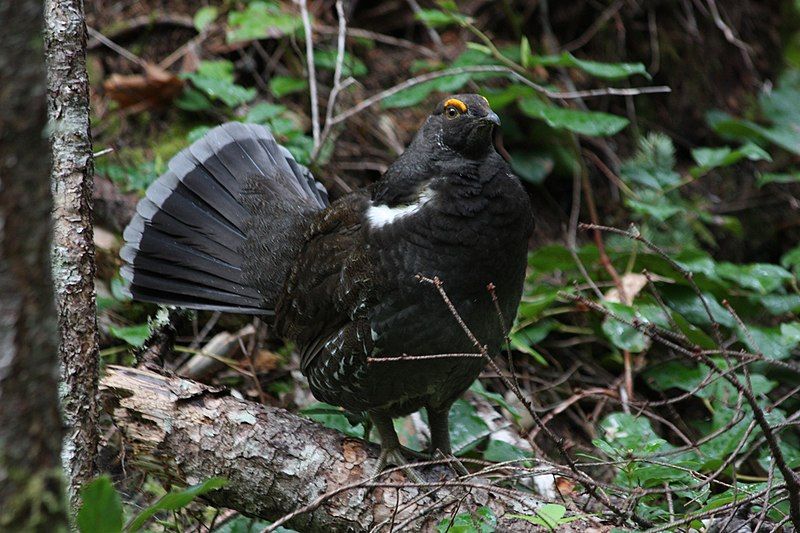
The sooty grouse is a species of forest-dwelling grouse that is native to North America’s Pacific Coast Ranges. This species of grouse is closely related to the dusky grouse, and until recently they were considered a single species, called the blue grouse.
The sooty grouse and dusky grouse are similar in many ways, from their size and body shape to their diet and habitats.
These two species of grouse are typically found in coniferous forests, but the sooty grouse prefers a slightly drier habitat than the dusky grouse. The sooty grouse has dark grey or black plumage with distinctive white wing patches, while the dusky grouse has lighter grey or brown plumage.
They both have short, rounded wings and long tails, and they are generally quite vocal, with males using a variety of calls to attract mates.
Both species also feed on a variety of vegetation, including leaves, buds, flowers, fruits, berries, and seeds. These two species of grouse are important components of the Pacific Coast Ranges’ ecosystems, and they provide essential resources for a number of other species.
Their diet provides food for other animals, and they also serve as prey for predators. The presence of these grouse helps maintain a healthy balance of species in the area.
| Kingdom | Animalia |
| Phylum | Chordata |
| Class | Aves |
| Order | Galliformes |
| Family | Phasianidae |
| Genus | Dendragapus |
| Species | D. fuliginosus |
17. Osprey
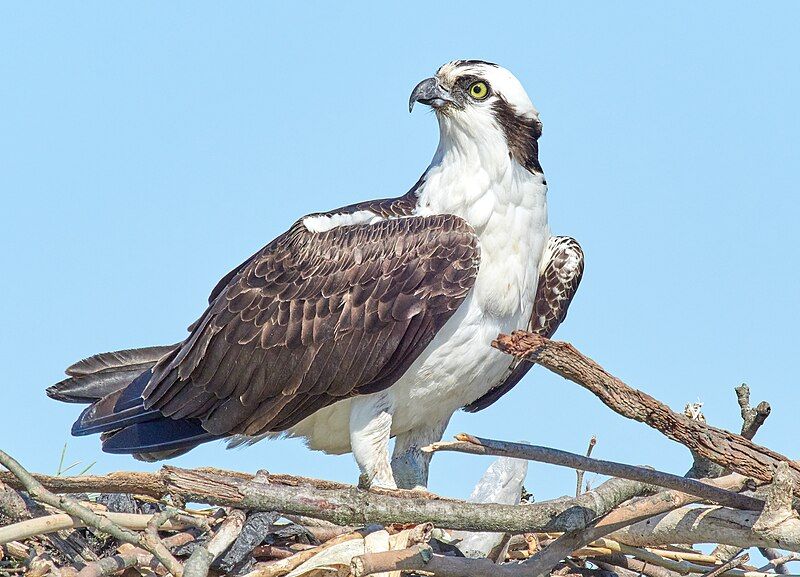
The osprey is a large bird of prey with a far-reaching distribution. It is recognized by a few different names, including sea hawk, river hawk, and fish hawk. It has a distinctive appearance, with a brown back and predominantly greyish head and underparts.
It is a diurnal bird, meaning that it is active during the day, and its diet consists mostly of fish. The osprey can reach up to 60 cm in length and 180 cm across the wings, making it one of the larger birds of prey.
It’s strong talons and sharp beak allow it to efficiently hunt and capture fish from both water and air. The osprey is a magnificent bird and an important part of the natural environment and is often seen in many parts of the world.
| Kingdom | Animalia |
| Phylum | Chordata |
| Class | Aves |
| Order | Accipitriformes |
| Family | Pandionidae |
| Genus | Pandion |
| Species | P. haliaetus |
18. Common Redpoll
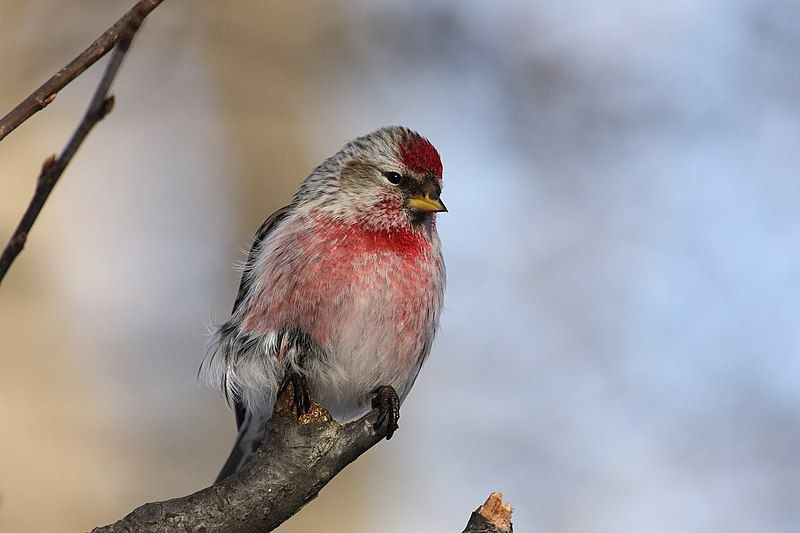
The common redpoll, also known as the mealy redpoll, is a species of bird belonging to the finch family. It is found in a variety of habitats that include thickets and shrubs, and its range extends further south than that of the Arctic redpoll.
This species of bird is smaller than the Arctic redpoll, having a length of about 11–13 cm, and is easily distinguished by its pinkish-red forehead and breast. Its back and wings are greyish-brown in color, while its belly is whitish.
It has a black line on its throat and a white rump. The common redpoll feeds mainly on the seeds of birch, alder, and willow trees, but it will also eat insects during the summer months.
It is an active and acrobatic bird and can be found in small flocks, often mixed with other finches.
| Kingdom | Animalia |
| Phylum | Chordata |
| Class | Aves |
| Order | Passeriformes |
| Family | Fringillidae |
| Genus | Acanthis |
| Species | A. flammea |
19. Brown Creeper
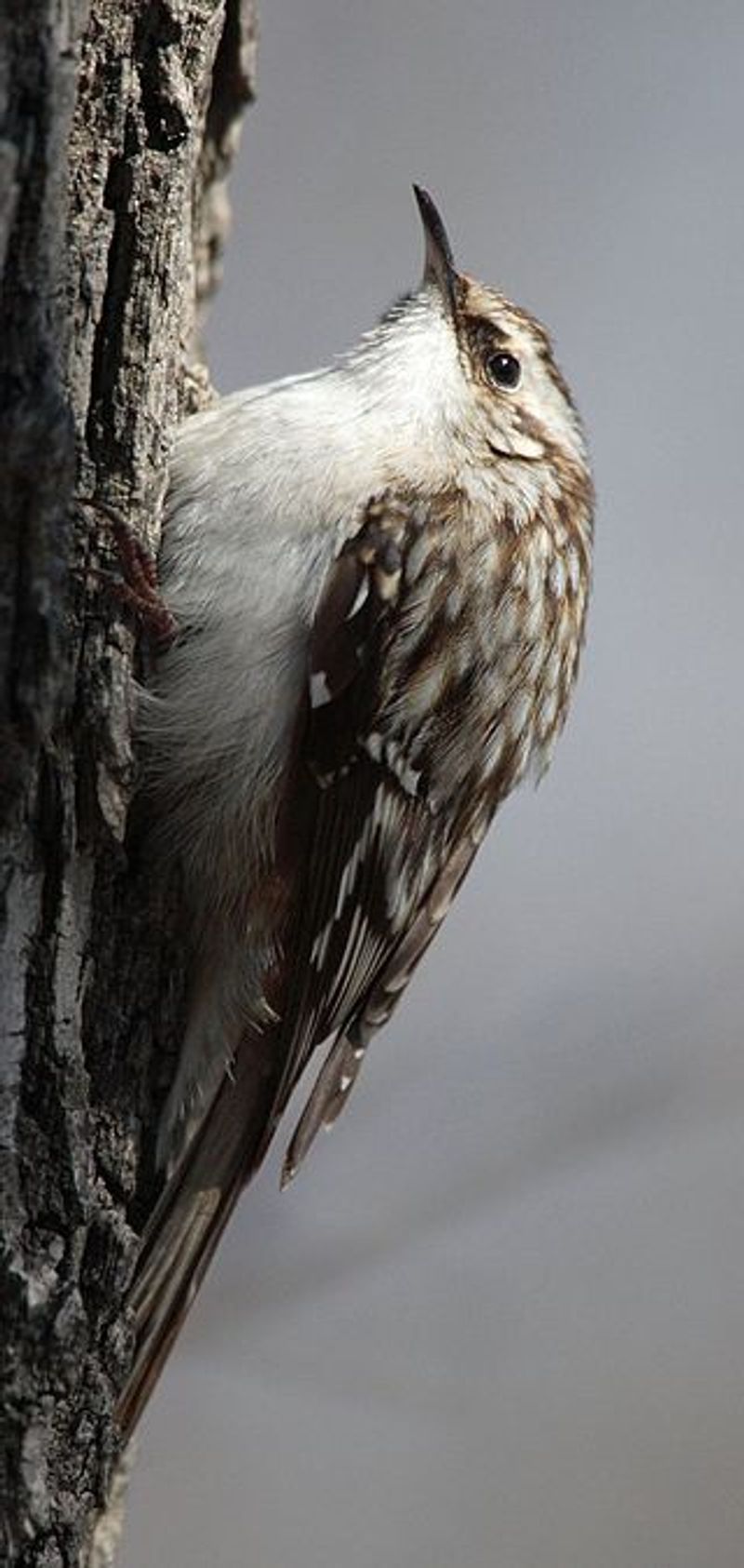
The brown creeper is a small songbird native to North America. It is the only North American member of the treecreeper family Certhiidae. This bird has a brownish-red upper body, white underparts, and a long, thin bill. The wings are brown with white spots.
This bird is a very active forager, often seen searching for insects and other small creatures on tree bark. It will often cling to the trunk of a tree while searching for food.
The brown creeper is also known for its distinctive song, which is a series of short, high-pitched trills. This songbird is often heard in spring and early summer when it is breeding.
During the winter months, the brown creeper will migrate south, where it can be found in deciduous and coniferous forests. The brown creeper is an important part of North American ecosystems, as it helps to keep insect populations in check.
| Kingdom | Animalia |
| Phylum | Chordata |
| Class | Aves |
| Order | Passeriformes |
| Family | Certhiidae |
| Genus | Certhia |
| Species | C. americana |
20. Ruffed Grouse
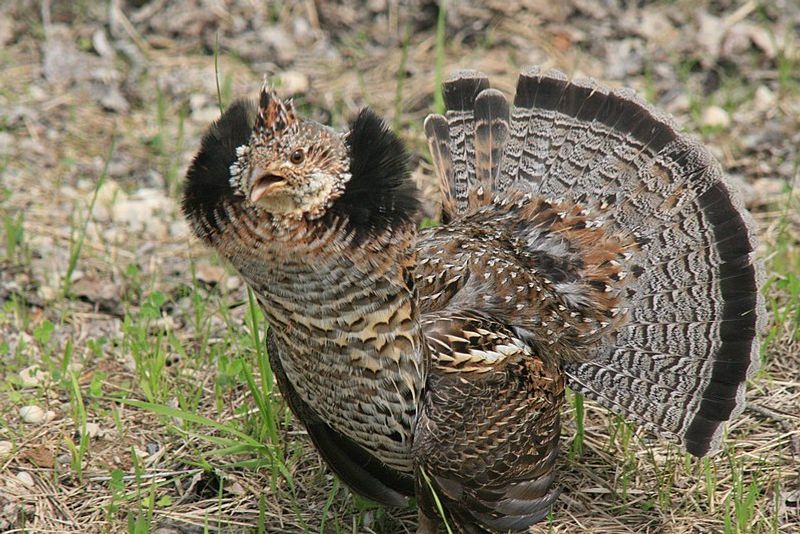
The Ruffed Grouse is a species of bird that can be found in many parts of North America, stretching from the Appalachian Mountains in the east, all the way to Alaska in the north.
It is a medium-sized grouse that is non-migratory, meaning that it does not migrate seasonally like some other birds. This makes it the most widely distributed game bird in North America, with a range that covers most of the continent.
It is also the only species in the genus Bonasa, meaning that it is a unique and distinct bird. The Ruffed Grouse is a fascinating species that is an important part of North American wildlife.
| Kingdom | Animalia |
| Phylum | Chordata |
| Class | Aves |
| Order | Galliformes |
| Family | Phasianidae |
| Genus | Bonasa |
| Species | B. umbellus |
Conclusion
Birds in Alpine are a vital part of the Alpine ecosystem, providing food, shelter, and a place for recreation. They are also an important part of the cultural heritage of the Alpine region and are admired for their graceful beauty and melodious song.
Despite the challenges of climate change, habitat destruction, and other threats, the future of Alpine birds remains hopeful, as the efforts of conservationists and local communities help to protect and preserve these beloved creatures.